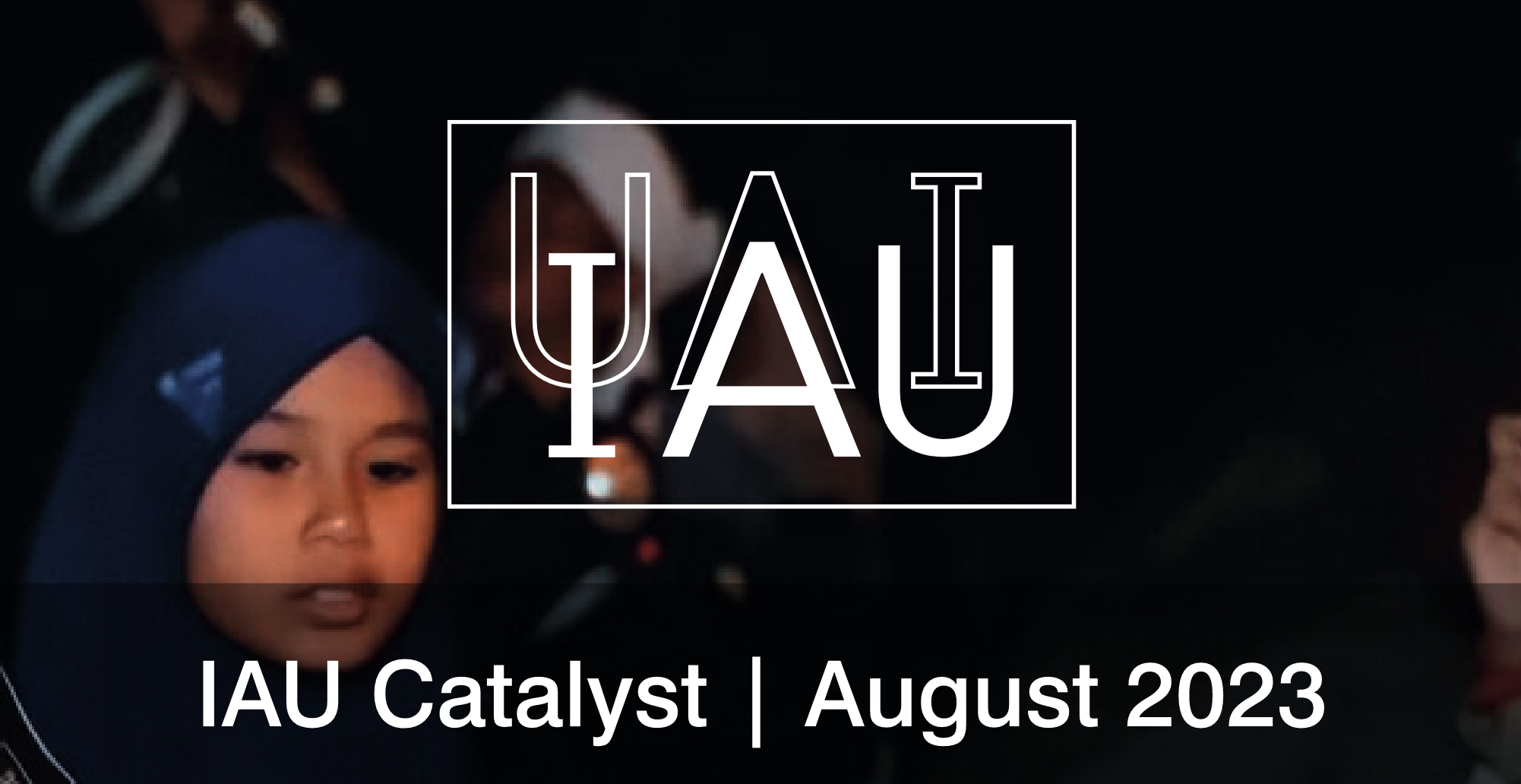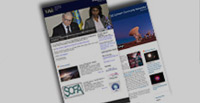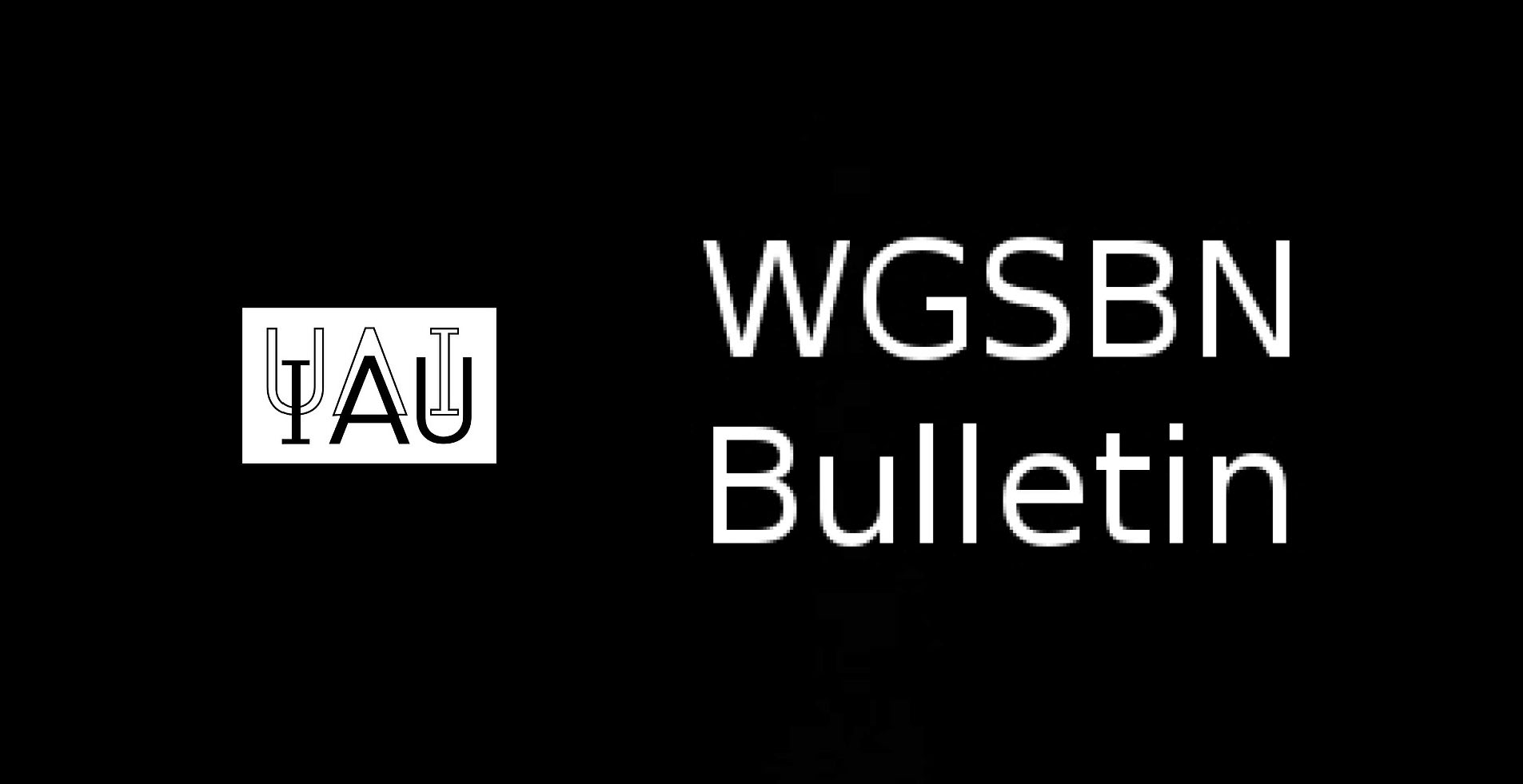- News
- Science
- Scientific Bodies
- Divisions
- Commissions
- Commission A1 Structure
- Commission A2 Structure
- Commission A3 Structure
- Commission A4 Structure
- Commission B1 Structure
- Commission B2 Structure
- Commission B3 Structure
- Commission B4 Structure
- Commission B5 Structure
- Commission B6 Structure
- Commission B7 Structure
- Commission C1 Structure
- Commission C2 Structure
- Commission C3 Structure
- Commission C4 Structure
- Commission C5 Structure
- Commission D1 Structure
- Commission E1 Structure
- Commission E2 Structure
- Commission E3 Structure
- Commission E4 Structure
- Commission F1 Structure
- Commission F2 Structure
- Commission F3 Structure
- Commission F4 Structure
- Commission G1 Structure
- Commission G2 Structure
- Commission G3 Structure
- Commission G4 Structure
- Commission G5 Structure
- Commission H1 Structure
- Commission H2 Structure
- Commission H3 Structure
- Commission H4 Structure
- Commission J1 Structure
- Commission J2 Structure
- Commission J3 Structure
- Commission X1 Structure
- Commission X2 Structure
- Past Commission Organising Committees
- Working Groups
- Centres
- Scientific Meetings
- Rules & Guidelines
- General Assemblies
- Meeting Proposals
- Future IAU Meetings
- General Assemblies
- EC Meetings
- Officers' Meetings
- Regional Meetings
- Symposia
- Focus Meetings
- Institutional Meetings
- IAU Offices Meetings
- IAU-Sponsored Meetings
- Letters of Intent submitted for 2024
- Letters of Intent submitted for 2023
- Letters of Intent submitted for 2022
- Letters of Intent submitted for 2021
- Letters of Intent submitted for 2020
- Past IAU Meetings
- Templates
- Other Meetings
- Grants & Prizes
- Scientific Bodies
- Publications
- IAU Publications
- IAU Strategic Plan
- Symposia
- WGSBN Bulletins
- Regional Meetings
- Information Bulletins/Catalyst
- E-Newsletters
- Focus Meetings
- Transactions A
- Transactions B
- Related Publications
- GA Newspapers
- CAPjournal
- IAU Books
- Brochures
- IAU Offices
- WG Reports
- Commission Reports
- Division Reports
- Past IAU Publications
- Rules, Guidelines and Instructions for Proceedings
- Publishers
- IAU Publications
- Administration
- About the IAU
- Statutes & Rules
- IAU Policies
- IAU Executive Bodies
- IAU Secretariat
- Resolutions
- Members Administration
- Administrative Dates & Deadlines
- International Organisations Relations
- Donate to the IAU
- Training in Astronomy
- Astronomy for Education
- Astronomy for Development
- Astronomy for the Public
- Office for Astronomy Outreach
- FAQ
- Themes
- Satellite Constellations
- Astronomy in Everyday Life
- How to Report a Discovery
- Careers in Astronomy
- Defining our Place in the Cosmos
- The Constellations
- Light Pollution
- Measuring the Universe
- Near Earth Objects
- How to Participate in Astronomy Research
- Naming of Astronomical Objects
- Naming of Exoplanets
- Buying Star Names
- Naming Stars
- Pluto and the Solar System
- IAU Member Statistics
- Our Moon: the Moon
- Meteors & Meteorites: The IAU Definitions of Meteor Terms
- UNESCO-IAU Portal to the Heritage of Astronomy
- Social Media
- Past Events
- Call for Online Resources
- Astronomy@Home Awards
- Contact

Edward A. Lilley
United States
1928-2020
Obituary:
Arthur Edward Lilley (Ed) was born in Whistler, Alabama, an unincorporated town near Mobile, on May 29, 1928. He graduated from the University Military School, a private prep school in Mobile, and entered Springhill College in 1946. After one year, he transferred to the University of Alabama, majored in physics, and received a B.S. degree in 1950 and an M.S. in 1951. He planned to go to the University of Chicago and study radiation physics. However, in his final year he was asked to think up a suitable demonstration for the dedication of the university’s new physics building, which had a 10-inch telescope on its roof. Inspired by what he had read about the opening of the 1893 Chicago Exposition, he designed and built an apparatus in which the image of a transiting star would trigger a phototube at the new telescope’s focal plane, which closed a relay to start a Tesla coil, which in turn ignited a cotton boll. The demonstration worked perfectly. The speaker for the event was Donald H. Menzel, a distinguished professor of astronomy at Harvard University. Ed accompanied Menzel back to the airport and struck up a conversation. Ed had long been interested in astronomy and had read Menzel’s book, “The Sun.” At the end of their discussion Menzel suggested that Ed apply to the astronomy program at Harvard. He did and was accepted and started his graduate studies in the fall of 1951.
The 21-cm wavelength line of neutral hydrogen (HI) had been discovered in the interstellar medium (ISM) by Ewen and Purcell in the spring of 1951, using a receiving system pointed south from the fourth floor of Harvard's Lyman Laboratory. Professor Bart Bok in the Astronomy Department responded enthusiastically and started a program to study the galactic distribution of HI. Ed and David Heeschen were the first graduate students in the program, which eventually produced nine PhD theses under the supervision of Bok.1 They helped assemble and commission a 24-ft parabolic antenna equipped with a single channel radiometer, at a site in Harvard, Massachusetts. Ed defended his thesis entitled, “A Radio Study of the Association of Gas and Dust,” in November 1954. He had been at Harvard for just over three years. In his thesis, he made the first empirical measurements of the gas-to-dust ratio in interstellar space and derived a value that still remains the standard value now, some 65 years later. His paper on the thesis was published in the Astrophysical Journal in 1955 and has been widely cited. Although radio astronomy began in 1932, Ed and Dave Heeschen were the first to earn PhDs in the field in a US department of astronomy.
He took a position at the Naval Research Laboratory (NRL) in the prominent radio group under John Hagen. There he helped initiate a 21-cm HI program. His most significant result was a study of absorption towards the supernova Cassiopeia A. From the galactic rotation model, he was able to show that Cass A was much more distant than thought at that time. In 1956 he worked with Alan Barrett to search for interstellar OH. They were not successful, primarily because the transition frequency was not accurately known. In 1958 he joined the faculty at Yale, but moved to Harvard in 1959 where he led the program in radio astronomy, which included directing the Agassiz Station’s 60-ft radio telescope in Harvard, Massachusetts, that had been commissioned in 1956. He received tenure in 1963. In 1968 he oversaw the replacement of the 60-ft reflector of the Agassiz telescope with a surplus 84-ft reflector on the existing mount. This upgrade doubled its collecting area.
Ed was the co-PI, along with Alan Barrett, for the microwave radiometer instrument on the Mariner II spacecraft in 1962, NASA’s first successful planetary mission. The spacecraft made high resolution scans of Venus during its flyby and showed that the radio emission at 1.3 and 1.9 cm wavelength was limb-darkened. This supported the primary theoretical model of the time that Venus had a hot surface (600K) and a cooler and very dense molecular atmosphere of 250K.
Both radio recombination lines and OH maser emission in the ISM were detected in 1965. Lilley, with his graduate students, Pat Palmer and Ben Zuckerman, began studying both. They made the first detection of recombination lines from helium and carbon, and made the first detection of OH maser emission in an excited rotational transition (2Π1/2, J=1/2). This was the first detection of a radio line from a molecule formed in the ISM from energy levels above the ground state.
Ed spent much of his effort in the period 1963 to 1972 designing and promoting a 440-ft radio telescope for general use in radio and radar astronomy at centimeter wavelengths. Inspired by the Haystack telescope, it was to be enclosed in a radome. The project began as a collaboration between MIT and Harvard as the Cambridge Radio Observatory Committee (CAMROC), was broadened to a regional facility named the New England Radio Observatory Corporation (NEROC), and culminated in the submission of a bill for a national facility on the floor of Congress by the Smithsonian Institution (with a funding stream outside of the NSF). Lilley was the executive director and Board member of NEROC. The 1960s was a period of growth and competition in the radio astronomy community. In addition to a large monolithic telescope, there were designs for interferometric arrays by the National Radio Astronomy Observatory (NRAO), Caltech and Stanford. Two separate ad hoc committees chaired by Robert Dicke tried to establish priority among the various initiatives. It became clear that the community would receive backing for only one major project and support coalesced behind the Very Large Array (VLA) of NRAO. It was ranked the top priority in the radio panel and the main committee of the 1970s NAS Decadal Survey led by Jesse Greenstein. It was funded by the NSF and dedicated in 1980. The US finally constructed a fully steerable telescope of the size class of the NEROC telescope, the 100-m NRAO Robert C. Byrd Green Bank Telescope, which was commissioned in 1994, two years before he retired. This saga has been extensively reported.2
In the early 1970s Ed obtained support from both Harvard and the colocated Smithsonian Astrophysical Observatory (SAO) to establish a research group focused on the emerging field of astrochemistry.3 The group he assembled consisted of John Ball and Dale Dickinson (observations), Carl Gottlieb and Harry Radford (laboratory spectroscopy and observations), Marvin Litvak (theory), Jim Moran (molecular masers) and Hayes Penfield (instrumentation). He helped to found the collaboration among Harvard, the University of Texas (UT), Goddard Institute of Space Studies, and Bell Laboratories to instrument and use the 5-m millimeter-wavelength telescope (MWT) of UT on Mt. Locke Texas. Using the MWT, the NRAO 140-ft and the NRAO Kitt Peak 36-ft telescopes Lilley’s group made the first detections of interstellar formic acid (H2CO2), methyl alcohol (CH3OH), trans-ethyl alcohol (CH3CH2OH)4, ethyl cyanide (CH3CH2CN), nitrogen sulfide (NS), sulfuric oxide (SO) and acetaldehyde (CH3CHO). The group also did extensive studies of other molecules, such as HCN, in molecular clouds.
Ed was also interested in the characteristics of the earth’s atmosphere. He wrote a paper with Litt Meeks in 1962 concerning atmospheric oxygen lines at 60 GHz. In the late 1970s Ed and colleagues built a special purpose radiometer to study the water vapor and ozone in the earth’s mesosphere.
From 1982 to 1994, Ed supervised the operation of the 85-ft telescope of the Harvard College Observatory in Fort Davis, Texas. Because of its location, this telescope was an important element in the US VLBI network until the VLBA began operation in 1994 with a new antenna at Fort Davis.
Ed supervised ten PhD students: Eugene Epstein (1962, HI in galaxies), Duane Muhleman (1964, Venus radar astronomy), G. Richard Huguenin (1964, long wavelength radio astronomy), Ellen Gundermann (1965, Galactic OH), Pat Palmer (1967, radio recombination lines), Ben Zuckerman (1968, OH masers), John Ball (1969, OH masers), Eric Chaisson (1972, radio recombination lines), Charles Lada (1975, molecular clouds), and Brian Connor (1985, atmospheric spectroscopy).
Ed was awarded the first Bart J. Bok Prize in 1958, an early-career award given annually to outstanding graduate of the Harvard Astronomy Department. He was an Alfred P. Sloan Fellow (1958-1964) and a member of the American Academy of Arts and Sciences.
Ed retired in 1996. Shortly after his retirement he moved to Fort Davis, Texas, and subsequently to Bradford, Vermont, and Chevy Chase, Maryland. He had many hobbies, the foremost of which was photography. He earned spending money as a commercial wedding photographer while in high school and college. His early photographs of historic buildings in Mobile were published in a book, Remembering Mobile, by Caldwell Delaney in 1948. While living in Fort Davis he undertook a photographic study of the phenomenon known as the Marfa lights (aka ghost lights of Texas). Although they have often been reported as UFOs, they are probably some sort of atmospheric refraction phenomenon involving automobile headlights or other lights on the ground. He specialized in black-and-white photography and won many awards in juried shows during his retirement.
Ed lived to be 92 even though he had had a heart attack in 1965 at age 37. He was mentally sharp to the end of his life but increasingly debilitated from Parkinson’s disease. He died unexpectedly and peacefully while sitting in his favorite chair on the evening of August 1, 2020.
The author is grateful for extensive conversations with Jean Andersen. Eric Chaisson, Carl Gottlieb, Paul Horowitz, Ken Kellermann, Charles Lada, Pat Palmer, Tim Robishaw, Irwin Shapiro, Paul Vanden Bout, and Ben Zuckerman provided helpful comments and suggestions.
Notes:
1 Students in Bart Bok’s program in 21 cm HI radio astronomy included A. Edward Lilley (1955), David S. Heeschen (1955), Thomas Matthews (1956), T.K. Menon (1956), Campbell Wade (1958), May Kassim (1958), Nan Dieter (1958), William Howard (1958), and Frank Drake (1959). Bok left Harvard 1956, and students after that time were co-supervised by other department members.
2 The story of the contentious struggle over new instruments in the 1960s is well documented in the books To See the Unseen: A History of Planetary Radar Astronomy, by Andrew Butrica, NASA, 1996; Fred Whipple’s Empire: the Smithsonian Astrophysical Observatory, 1955-1973, by David DeVorkin, Smithsonian Institution Scholarly Press, 2018, and Open Skies: The National Radio Astronomy Observatory and Its Impact on US Radio Astronomy, by Kenneth Kellermann, Ellen Bouton and Sierra Brandt, Springer, 2020.
3 The Center for Astrophysics (CfA) was formed in 1972 as an umbrella over Harvard College Observatory and the Smithsonian Astrophysical Observatory. It was organized into seven divisions, and Ed’s radio group served as a model for them. He was Associate Director for the Radio and Geoastronomy Division from 1972 to 1985.
4 The paper reporting the detection of ethyl alcohol begins “Ethyl alcohol has been of interest to mankind since the dawn of the earliest civilizations,” and ends with an estimate of the alcoholic proof of the molecular cloud of ∼10-3 (Zuckerman, et al., ApJ, 196, L99 1975).
Contributed by James M. Moran
Past affiliation(s) within the IAU
- Past Member of Division B Facilities, Technologies and Data Science
- Past Member of Division F Planetary Systems and Astrobiology
- Past Member of Commission 40 Radio Astronomy (until 2015)
- Past Member of Commission 51 Bio-Astronomy (until 2015)
- Past Member of Division III Planetary Systems Sciences (until 2012)
- Past Member of Division X Radio Astronomy (until 2012)
Search individual members

















